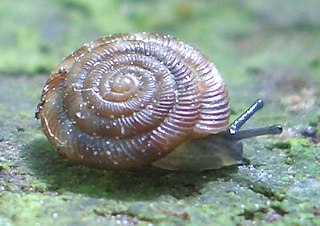
Discus is a genus of small air-breathing land snails, terrestrial pulmonate gastropod mollusks in the family Discidae, the disk snails.

Anguispira picta, common names painted snake-coiled forest snail and painted tigersnail, is a rare species of air-breathing land snail, a terrestrial pulmonate gastropod mollusk in the family Discidae, the disc snails. It is a limestone specialist, and is limited to outcrops with suitable mineralogy.

Anguispira, the tigersnails, is a genus of small pulmonate land snails in the family Discidae endemic to North America. Snails in this genus are defined by their striped shells. Anguispira species are either habitat generalists like A. alternata or limestone specialists like A. cumberlandiana.
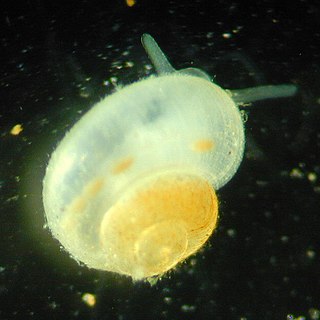
The Tumbling Creek cavesnail is a species of freshwater cave snail with gills and an operculum, an aquatic gastropod mollusk in the family Amnicolidae.

Beddomeia hallae, also known as Buttons Rivulet hydrobiid snail, is a species of small freshwater snail that is endemic to Australia. The species is an aquatic operculate gastropod mollusk in the family Hydrobiidae. Beddomeia hallae belongs to the genus Beddomeia, which is the largest group in the family Hydrobiidae, consisting of 47 species. In the Threatened Species Protection Act 1995, this species is one of the 37 Beddomeia species listed as endangered, however, on the International Union for Conservation of Nature Red List, the species is listed as vulnerable. Found in Tasmania, in the streams of Buttons Rivulet and Castra Rivulet, Beddomeia hallae is sighted in its natural habitat amongst wood, leaves and under stones. Nonetheless, the Beddomeia species including Beddomeia hallae are geographically isolated, existing within restricted ranges.
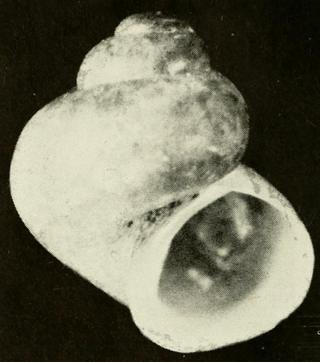
The Cahaba pebblesnail, scientific name Clappia cahabensis, was a species of very small freshwater snail, aquatic gastropod mollusks in the family Lithoglyphidae.
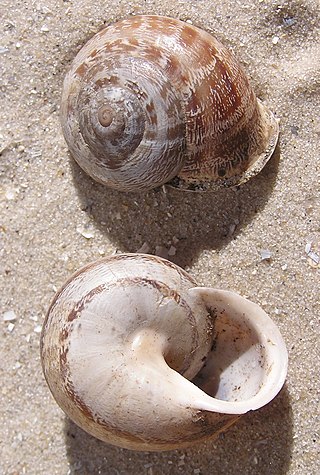
Eobania vermiculata also known as Helix vermiculata, common name the "chocolate-band snail" is a species of large, air-breathing, land snail, a terrestrial pulmonate gastropod mollusk in the family Helicidae, the true snails or typical snails.

Anguispira alternata, common name the flamed disc or flamed tigersnail, is a species of air-breathing land snail, a terrestrial pulmonate gastropod mollusk in the family Discidae, the disk snails. Flamed discs are medium-sized snails, with shells ranging from 17 to 25 millimeters in diameter. They are found around logs, hollow trees, and rocks in wooded areas throughout eastern North America, ranging from New Brunswick, Canada, south to northern Florida, and west to northeastern Texas, Kansas and western Minnesota. Flamed disks are herbivores that feed on decaying plant material, fungi, and algae.

Patera clarki nantahala, the noonday globe, is a subspecies of Patera clarki, a land snail in the family Polygyridae. It is endemic to North Carolina in the United States.
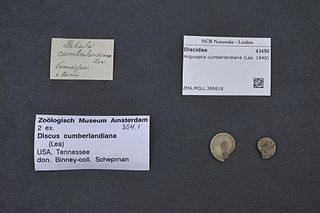
Anguispira cumberlandiana, the Cumberland tigersnail or the Cumberland disc, is a range-restricted species of land snail; a terrestrial pulmonate gastropod mollusc in the family Discidae. They possess a lens shaped shell with convex whorls and a pinched, serrated keel. The shell is typically pale olive or tan in color, with radiating chestnut stripes and oblique radial streaks. This species is found in a few counties in Alabama and Tennessee along the Cumberland Plateau in the United States.

Anguispira kochi, the banded tigersnail, is a species of pulmonate terrestrial gastropod belonging to the family Discidae, the disk snails. There are two recognized subspecies: Anguispira kochi kochi or the eastern banded tigersnail, and Anguispira kochi occidentalis, the western banded tigersnail.
Anguispira alabama, also known as the Alabama tigersnail or Alabama disc, is a rare, range-restricted species of pulmonate land snail found in Alabama and Tennessee. Due to its rarity and the difficulty of locating new populations, the species is listed as vulnerable in both states.
Anguispira stihleri, also known as the Greenbrier tigersnail, is a rare, range-restricted species of pulmonate land snail endemic to Greenbrier County, West Virginia. It was first discovered in 1993 by biologist Craig Stilher, for whom it is named.
Anguispira jessica, also known as the mountain tigersnail or mountain disc, is a species of pulmonate land snail– a gastropod mollusk in the family Discidae, the disk snails. The species is named after G.M. Kutchka's wife Jessica; he was the first to describe the species in 1938. It was originally considered a subspecies of Angusipira alternata, but has since been elevated to species status.

Anguispira fergusoni, also known as the coastal plain tigersnail or coastal plain disk, is a species of pulmonate land snail in the family Discidae, the disk snails. It is found in multiple states along the east coast of the United States.
Anguispira nimapuna, also known as the nimapuna or nimapu tigersnail, is a rare, range-restricted species of pulmonate land snail endemic to north-central Idaho. The species is listed as critically endangered in the United States.
Anguispira knoxensis, also known as the rustic tigersnail or rustic disk, is a rare species of pulmonate land snail in the family Discidae, the disk snails. It is endemic to the Great Smoky Mountains in southeastern Tennessee. It was originally considered a subspecies of Anguispira alternata.
Anguispira macneilli, also known as the Tombigbee tigersnail, is a species of pulmonate land snail in the family Discidae, the disk snails. It was formerly treated as a subspecies of Anguispira alternata.

Anguispira mordax, also known as the Appalachian tigersnail, is a species of pulmonate land snail in the family Discidae endemic to the southeastern United States. It is named after the Appalachian mountain range.

Anguispira strongylodes, also known as the southeastern tigersnail, is a species of pulmonate land snail in the family Discidae, the disk snails.














